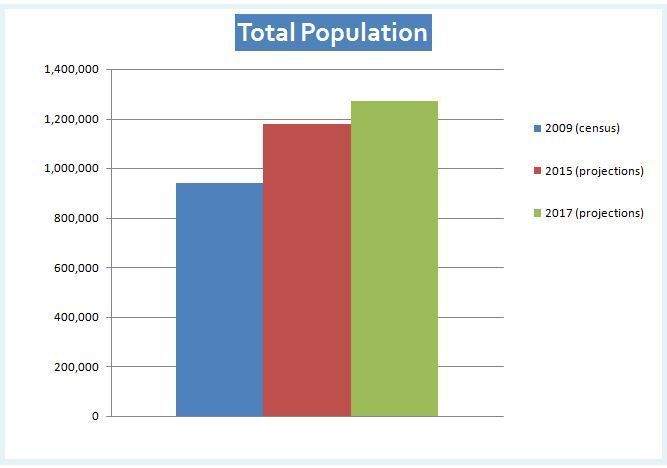Demographics

County Demographics
Population distribution and settlement patterns in the County are influenced by proximity to vital social and physical infrastructure networks such as roads, housing, water and electricity. Other factors that influence settlement patterns include accessibility to employment opportunities and security.
The total population of the county based on the 2019 Kenya Population and Housing Census was 1,208,333 persons of which 610,257 were male and 598,046, were female.
Most Populated sub-county
Kisauni Sub-county is the most populated sub county in the County with a population of 291,930 (24%) of the total population, which is projected to increase to 310,216 and 343,682 by the years 2022 and 2027. This high population size can be attributed to accessibility of low-cost housing and strong land tenure system.
Lowest Populated sub-county
On the other hand, Changamwe Sub-county has the lowest population size which is due to the poor and inadequate social infrastructure compared to the other sub counties. Mombasa County is entirely urban according to the 2019 census.
It is projected to be 1,283,933 in 2022 and 1,367,714 and 1,422,440 in 2025 and 2027 respectively.
Challenges and Opportunities
Thriving Dynamics as an
Industrial and Port Hub
Mombasa’s industrial and port city status, as a gateway to East and Central Africa, attracts a large population seeking employment, education, and investment. This puts pressure on infrastructure, housing, transport, and social services, necessitating investment and expansion to create jobs.
Enhancing Growth & Prosperity
The County’s average population density is projected at 5495 persons per Km2 in 2019 and is expected to grow to 6557 persons per square km by the end of the plan period (2027), owing to high population growth and the influx of immigration of persons seeking employment in the manufacturing, service and processing industries and the Port of Mombasa.
Mvita sub county has the highest population density (11,203 persons/ Km2).
The high population density in Mvita sub county is attributed to proximity to vital infrastructure such as roads, water, electricity and employment opportunities due to the high concentration of various industries within the sub county and the presence of other physical facilities such as the Port of Mombasa and the Moi International Airport.
Kisauni Sub County on the other hand is the least densely populated sub-county with a density of (3,536 persons/ Km2) in 2019.
Low population density in Kisauni sub county can be attributed to inadequate social amenities and poor road network. This implies more targeted policy and programmes need to be prioritize in this area to attract more population.
Meeting the Demands A Robust Labor Market
The high labour force implies higher demand for job opportunities. This will require that more efforts be made to create jobs through capacity building in vocational training, initiation of policies that will promote investments and creation of more job opportunities in the county.
